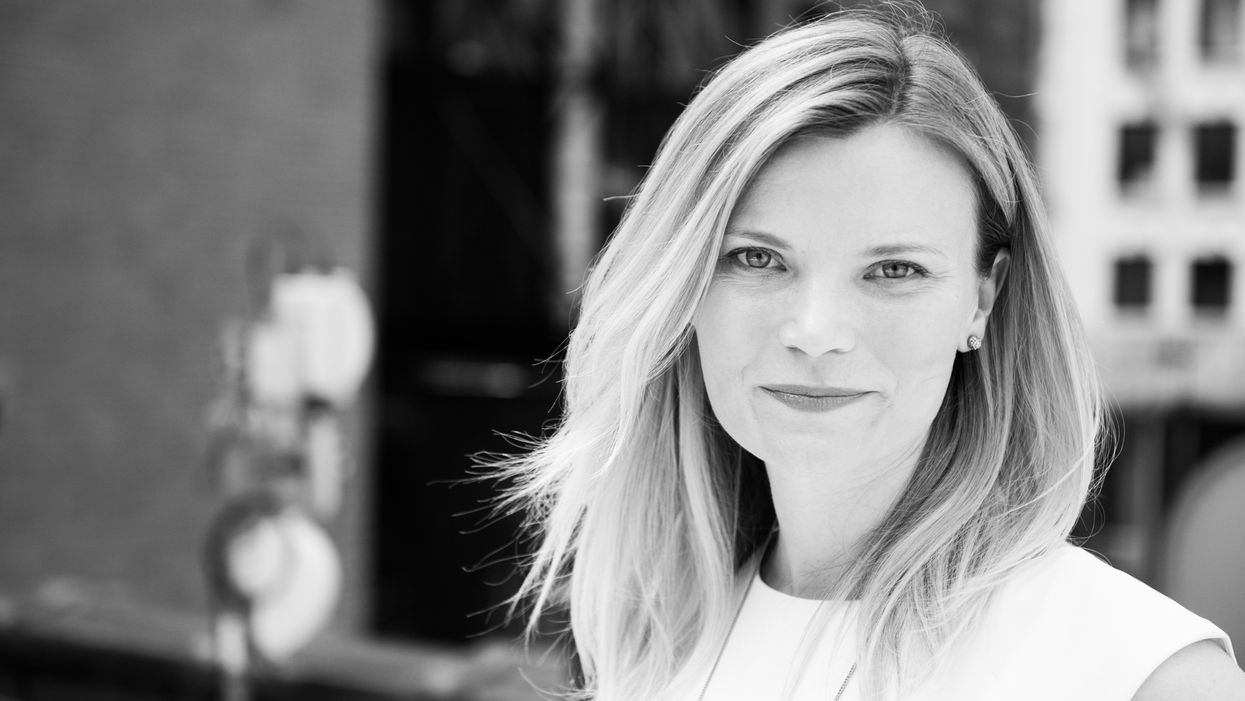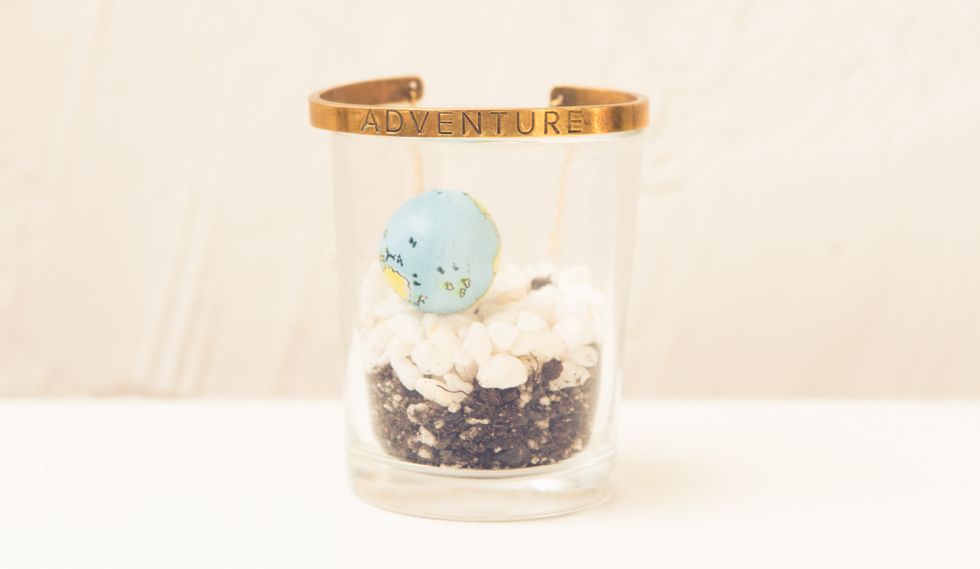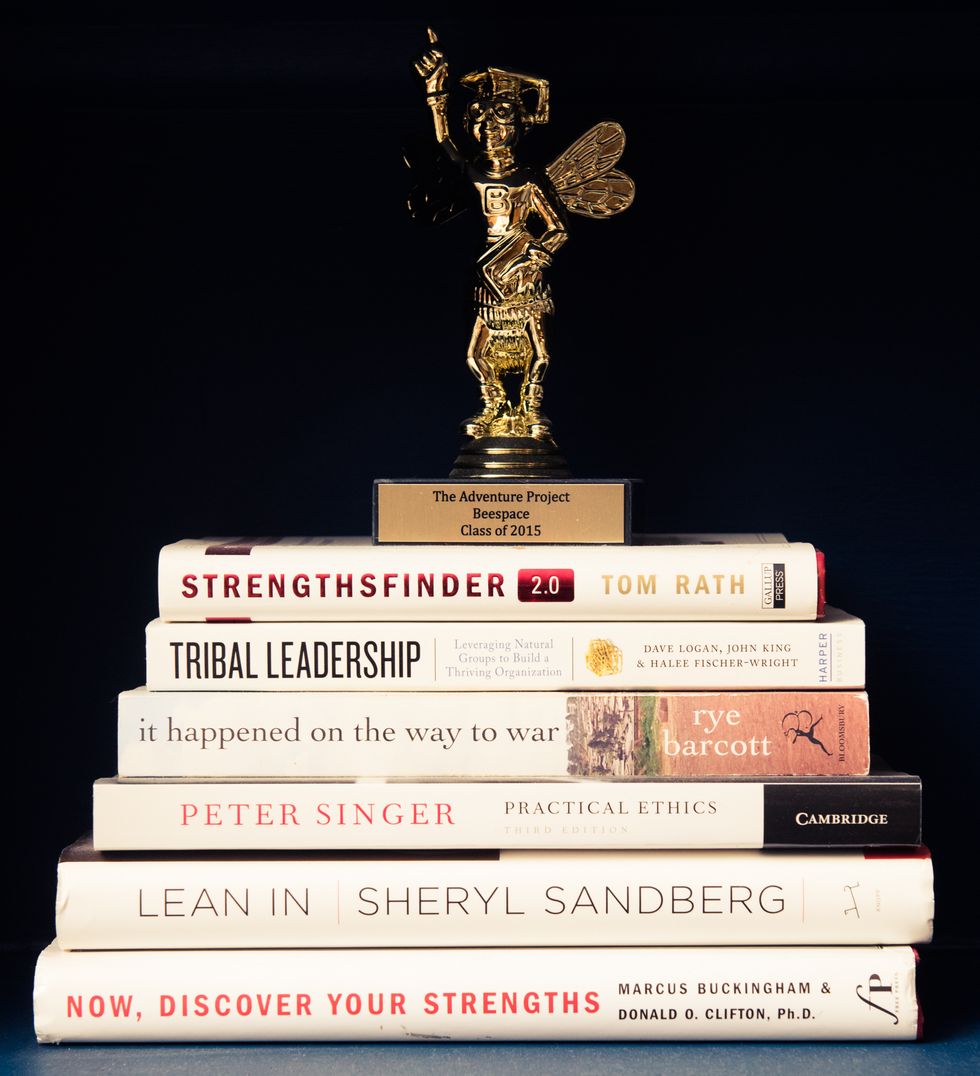The Nonprofit That’s Changing the Way Philanthropy Works
The Adventure Project is our first charity partner. And we want you to get involved.

This year for Mother’s Day, we did a very special project. We partnered with The Adventure Project, IfOnly and three very influential and admirable women in the industry—Aerin Lauder, Bobbi Brown, and Zanna Rassi—on a campaign that raised money to train Ugandan women to be healthcare workers in their own communities, where they would be able to make their own income and support their own families. To put it bluntly, it’s something we really believe in. All the more so as we learned more about The Adventure Project and its founder, Becky Straw. Take it from us: it’s well worth your time to take her to lunch.
Here’s a first for us: The Adventure Project is our first philanthropic partner. Straw’s organization is rethinking the way in which charity works in developing countries: instead of giving money and products away, The Adventure Project works somewhat like a venture capital firm for effective nonprofits: funding entrepreneurial activity that will both provide jobs and help in the four most needed areas—water, hunger, health and environment. Straw says it better than we can, so we visited her at her offices in the Flatiron district, where she works alongside three employees and a host of interns. The greatest thing about the whole thing? It’s almost unbelievably easy to do something. They’ve had the support of people like Diane Von Furstenberg and the aforementioned heavy hitters, but The Adventure Project gets most of their funding from people like you. So we’re putting it to you: get involved. We’ll let Straw tell you all about it.
Before The Adventure Project there was…:
“I was the third employee at Charity Water. I was doing anything and everything—mainly operations, helping them grow that team and then I became the program director. It was my first job out of grad school.
“I graduated from Columbia with a master’s in International Social Welfare. I had been placed at UNICEF’s Water and Sanitation and Scott Harrison [of Charity Water] had come into the office and I was like, ‘I will work for free for you because I believe in what you’re doing.’ I was brought on officially in the fall. Being the program director, I spent a third of my time in Africa managing all of our water projects and making sure they were working. [I also spent a lot of time] in Haiti and India.”

When the seed for The Adventure Project was sewn:
“It started with managing water projects in these countries and going back and visiting villages that once had clean water, and realizing that their wells were broken. It was happening on a massive scale—it wasn’t a Charity Water problem, it was a systematic problem of [other groups going in] and providing people with free services but then not providing any tools or skills, or any sort of spare parts. It’s basically like if you’re giving a village an SUV but then not giving them any fuel, or anything to maintain it. A third of all wells are broken right now, so our idea was: what if we just focused on what people really want, which is a job.
“Everywhere I was travelling people were saying, ‘Thanks for the well, wondering if you're hiring?’ That was a huge turning point for me. If we’re going to give effectively and we’re going to devote our time to something that is meaningful, we want to know that our money is going to the right places. We don’t need credit for it, we just want to know that we’re doing the right things and we’re empowering people and not leaving them feeling dependent or worse off than when we originally arrived. That’s where we got the idea. The Adventure Project came from the idea of doing something entirely different that’s adventurous. We’re adding venture and starting jobs, which is what people really want.
“There is a ten-year survey [happening in] 170 countries asking what people want to achieve most—what’s your great global dream? Everyone is saying the same thing, which is, ‘I want a good job.’ It’s the same whether you’re in LA or Nairobi. If everyone is saying that, why aren’t we focusing our attention on just helping to build capacity, help local leaders lead, and have them build their own economic drivers that will help? It reduces violent conflict, it helps reduce child mortality.”
How she got it off the ground:
“We knew people liked to give. [Our challenge was]: how do we bring our own angle to it and do it really effectively and differently? You start small. We didn’t take salaries for a year and a half, which meant that I eventually moved onto friends’ couches when I went through two credit cards. We started through social media. Then we started testing models.”

How they find the projects to fund:
“There’s a lot of research. We act like VCs, but we’ve only funded six organizations. We’re very specific about what we’re looking for and they’re all non-profits, that way our donors are getting a tax receipt. We’re trying to change the way people look at philanthropy and say, ‘look, why don’t you use your philanthropic dollars for something that’s really going to provide a return and really going to help people thrive, that targets people living in extreme poverty?’ The person that’s buying into one of our funded projects is somebody who usually makes $1.50 a day or less.”
One of their most successful programs involves charcoal-efficient stoves:
“Three billion people cook over open fires or eat food cooked over open fires. It’s one of the largest killers of women and children. It causes respiratory illness—you’re breathing in [the equivalent of] two packs of cigarettes a day and if your child is strapped to your back, they’re breathing in it, too. We’ve been doing this for millennia—since the beginning of time people have been cooking over open fires. We’re trying to consider how can we help start a stove enterprise where people are making locally produced, affordable stoves. Instead of just making them and giving them away, we think it’s much more important to try and start an enterprise. We help subsidize the cost and help them get machinery, job training, and financial business training so that they know how to sell them, and where to sell them in local markets. Basically how do you turn this into a revenue model that’s going to be long-lasting.

The issue of self-sufficiency:
“There’s a huge issue in international development where things can be profitable but they don’t have enough funding to ever scale. We’re providing capital that’s long-term to help the organizations grow. There’s this huge missing middle that we’re filling in, where someone has a great idea, they have a great vision, a great model, but they need extra capital. We’re working with a few small local Kenyan stove masons and enterprise and then they’re selling them in the markets.”
They did something similar in Haiti that’s now self-sufficient:
“The [stove] company we used to help in Haiti started by branding it as: we’re saving trees, we’re saving the environment. But when you really listen, you realize actually they’re saving money. So they rebranded the stove as The Money Saver. That’s when you really started getting people to purchase them, because they’re like, ‘how do I save money?’ Same with the irrigation pumps in Kenya. The local organization is called Kick Start, but they changed it—the product is called The Money Maker. So you can buy The Money Maker Pump. People will literally come up to the car because they have the decal and they’re like, ‘how do I make money?’ It’s interesting. I think it’s really about what is going to get someone interested in the product. We don’t want to give them away because if you get it as a gift you might not necessarily value it. Who knows if they are really going to use it. This way, we’re able to test the market and say, ‘okay, there is actually a demand for this product and we know what we’re funding is working.’ Otherwise if we are just giving them away, how do we know if we’re being effective?”

The projects they’re funding right now:
“We’re supporting four organizations now. We have the stove program, which is our environmental partner in Kenya; we’re doing water projects and helping train well mechanics in Uganda. We’re also helping Living Goods, which is an organization working in Uganda and now Kenya. We’re training women to become healthcare workers. Our fourth is irrigation pumps for farmers. We’ve decided to look at our portfolio as what are the greatest issues of our time, the things that affect the most people, the things that are killing the most people in developing countries and then, what are the entrepreneurial solutions that can help solve these problems? Let’s see if we can move people out of poverty faster, save lives faster—and the results are overwhelmingly positive. Living Goods for example, can help reach one person for the cost of $2 a day to train a healthcare worker. Each healthcare worker is able to serve 800 people in her community. By being able to train one woman you’re serving 800 people. That’s a good return on investment. She’ll sell the medicine and any of the things in her healthcare bag. She’s like a walking Duane Reade and they’re still more affordable than if people bought them in the local market.”
One of the (many) stories that stays with her:
“One story that sticks with me is about Joy, who is a healthcare worker in Uganda. She was one of the first women I met five years ago when I was visiting the program and evaluating it. Before she was a healthcare worker her husband at died in the Rwandan genocide—he was part of the Ugandan military presence. She had three small kids. She lived in a storage container and she had a neighbour who helped her forge these documents that said she had HIV/AIDS so that she could get food from different non-profits. She said she spent her day just walking around to five different organizations asking them if they could help get her kids in school. She was able to get one into school, but the other two she couldn’t. She’s crying when she is telling me all of this—reliving ten years of struggling and begging for handouts.
“She heard about Living Goods coming into her community. She knew how to read and write—those were the requirements. She applied. Last time I was there I got to see her apartment, her grandkids. She’s doing extremely well serving her community, and most importantly her dignity and her whole outlook on life has changed.
“Living Goods trained her, but now she’s working and earning an income. We’re not continually funding her. I go and visit her because I like her as a person, but she’s on her own.”

How they raise $$$:
“[We raise money] through individuals. That’s how we got started—it was just moms and millennials, people who wanted to make a difference. The idea is that you don’t have to give a lot to really know that your money is making a difference. That’s always been our mantra: that if you can give one dollar a day that’s incredible because you’re going to end up helping one person every week.
“We raise money through storytelling and just trying to make the connection that, just because someone was born in another country, doesn’t mean that they don’t deserve the same opportunities. It just means that they are lacking those opportunities. People don’t actually want handouts, they’re just like you: they want a job, they want to work and earn it. They just need a little help to start. Everyone has purpose, just not everyone has opportunity.”
The biggest challenge they face:
“We are such a new idea that most of the time we don’t fit into a certain category of funding that a company would normally look at. We’re trying figure out how we position ourselves. We’re working harder on figuring out how we find that catalytic support so that we can build a team here that can raise millions of dollars and channel it into the right place. Right now we’re only three staff.”

Buying Brooklyn-crafted soap will help:
“Apotheke, which is in Red Hook, Brooklyn, makes a charcoal soap. With every soap you purchase, you’re helping to buy a fuel-efficient stove for a family in Kenya. We helped design the packaging and we’re their non-profit partner. Buying one will make a stove highly subsidized for someone in need.”
How you can get involved:
“So many people want to be part of our work, so we’re trying to find a way of how can we take people with us. We have an exclusive membership program called The Collective and these are people that really want to put their funding in the right place. They donate a minimum dollar a day to be part of our membership and then in return they’re entered into a raffle to win a trip to come with us [to Kenya this fall]. Their travel expenses will be covered if they’re selected. Every time they invite a new friend or a new member to join they get an additional ticket—the more you sign up the more chances you have of winning. [Ed note: You’d better believe we signed up, and you should too!]
“With this trip to Kenya, we’re going to visit three local organizations: our stove partner, our Kenyan farmers and then Soko jewelry. They make jewelry outside Nairobi. We’re doing an Adventure bracelet with them and we’re going to be meeting some of the jewellers. And then we’re doing a two-day safari because I figured, we’re in Kenya and I’ve never been on a safari because I’ve always been working. I’m really excited—it’ll be new for me, too.
“Even if you can’t go on this trip, just signing up and becoming a member is great. You’re helping one person every week; your money is going to the right place. If you happen to win, but you can’t go, we’ll bring you on the next trip. I don’t want that to be a barrier. The real reason you should enter is because it’s impactful. But it doesn’t hurt that you can potentially come and be part of our storytelling team and really help. This is a great opportunity to do that and learn something along the way.”

The big goal:
“For us it’s about what the world would look like if everyone just committed one dollar per day. You’re not going to miss it and it’s going to add so much value to your life because you’re going to feel so good. If you’ve had a shitty week, you’re like, well at least I helped someone this week. There are a billion people that have to struggle to live on a $1.25 per day or less, so donating a dollar a day to help lift these people up [and would help hugely]. Our short-term goal is to find 1,500 people to join us in the next month through this contest—that would be a great start. That would mean we would be creating one job every day of the year. Especially because you realize every new job helps 500 more people—it’s really duplicating your impact and scaling by planting that seed in another person. Our long-term goal is that we’d love to create a million jobs. In order to do that, we need to get more people signing up and joining and raising their hand to say, ‘Yeah, I believe in this and I believe in giving people opportunity and dignity.’”
Are you as excited about The Adventure Project as we are? Find out more about how you can help by subscribing to their newsletter. And if you want to do something really big and get your business involved, sign up here.